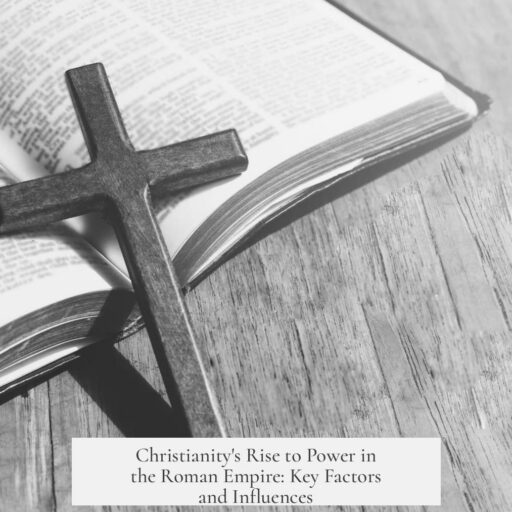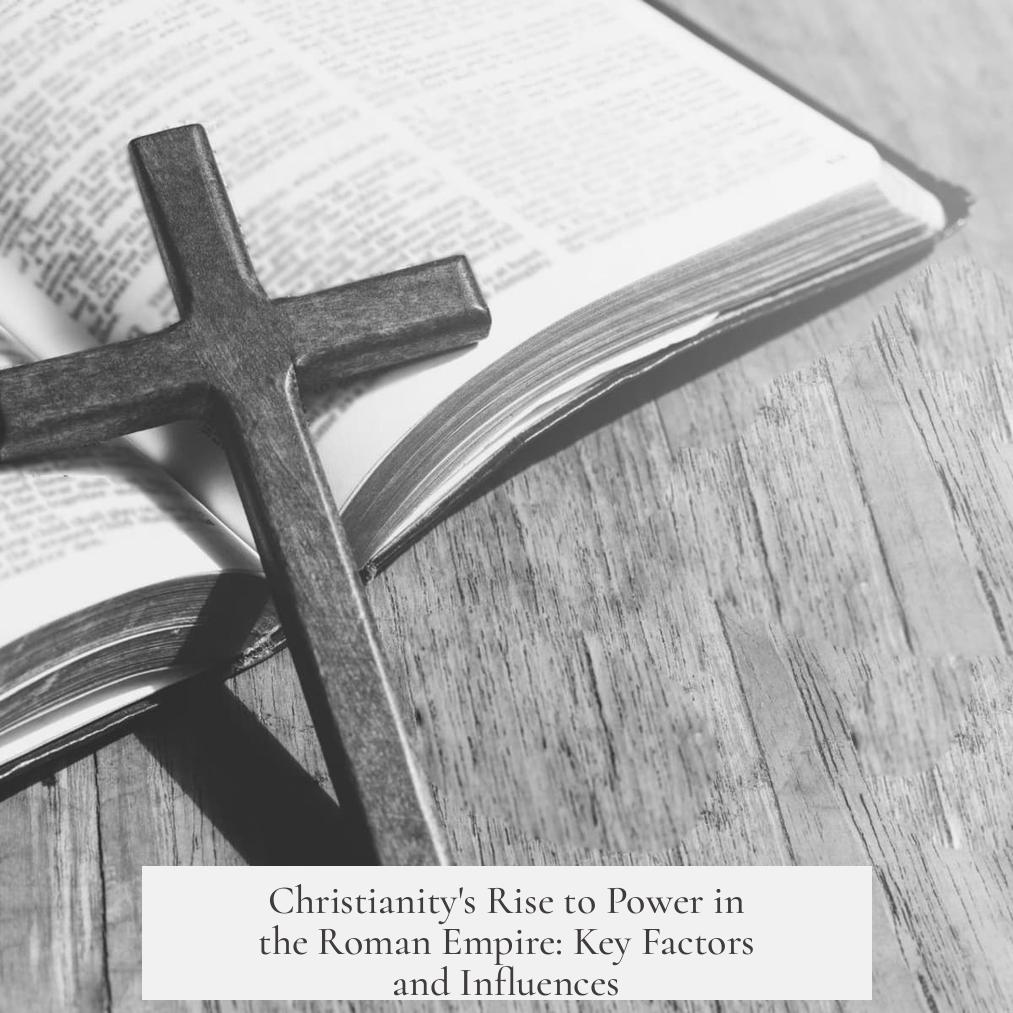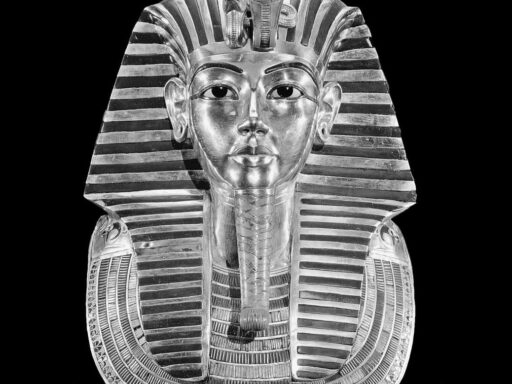Christianity comes to dominate the Roman Empire through key imperial support, social appeal, organizational strength, and historical circumstances that favor its spread. The religion’s rise results from political endorsement, especially by emperors like Constantine and Theodosius I, and its deep appeal to diverse social groups amid the Empire’s struggles.
The role of Emperor Constantine is pivotal. He converts to Christianity after attributing a military victory to divine intervention. Constantine organizes the Church and clarifies Christian doctrines. Most importantly, he issues laws favoring Christians and enables them to assert legal rights, such as having civil cases tried by Christian judges. This legal priority eases Christians’ advancement in government and society. Constantine’s policies help integrate Christianity with imperial power, accelerating its growth.
Later, Emperor Theodosius I solidifies Christianity’s dominance by mandating government officials to convert and banning traditional pagan cults. This enforcement decisively pushes Christianity to the forefront as the Empire’s official religion.
Christianity’s appeal rests on contrasting qualities with pagan religions. It offers a personal relationship with a caring God, unlike pagan gods who appear indifferent and transactional. The Christian God represents love, mercy, and justice, rewarding the good and punishing evil. This moral structure encourages believers to form supportive communities, providing material and spiritual aid—something paganism lacks.
Christianity’s organizational structure is well-developed. It has interconnected leaders: priests, bishops, and elders coordinate across the Empire. In contrast, pagan priests act mainly as ceremonial functionaries with no unified network or leadership. This effective organization facilitates communication, coordination, and coordinated growth.
The religion further outshines paganism in its social aspects. It promotes charity, care for the sick, and support for the poor—vital roles during crises like plagues where pagan temples and priests provide little help. Christianity’s message promises eternal life and salvation for all, regardless of social rank, attracting the downtrodden with hopes of justice and redemption. Additionally, it expands women’s roles compared to traditional Roman and Jewish norms, further broadening its base.
Christianity rejects strict Jewish laws unpopular among Gentiles, such as circumcision and dietary rules. Its openness and proselytizing set it apart from many exclusivist cults. Christians actively engage non-believers, enabling rapid expansion throughout Roman territories.
Historical crises in the 3rd century, including economic hardship and political instability, push many toward Christianity. Persecutions ironically strengthen it by turning believers into martyrs, inspiring others to join. Attempts like Diocletian’s to eradicate Christianity ultimately fail.
Paganism declines due to inflexibility and lack of political backing. Many pagan temples fall into disuse. Christianity adapts by absorbing pagan symbols and festivals, easing conversion. For example, former Roman gods become saints, and winter solstice celebrations influence Christmas.
The Roman Empire’s infrastructure, with roads and cities, aids the rapid spread of Christianity. The movement of people and ideas allows the religion to expand beyond regional confines.
Elite conversions advance the religion’s reach. Female aristocrats often convert first, leading household members and powerful men to follow. These conversions provide social and economic incentives, as Christians gain favorable access to government and military positions under Christian emperors.
Christianity’s moral framework contrasts with the traditional Roman valorization of violence and social status. Its emphasis on humility, forgiveness, and compassion offers a new spiritual model, appealing to a population weary of constant conflict.
The promise of universal salvation and an afterlife presents hope beyond the temporal and material focus of pagan life. This hopeful worldview reassures many facing death and uncertainty, increasing the religion’s emotional and spiritual attraction.
Christian charity and communal care increase Christianity’s social relevance and public visibility. Christian networks help the vulnerable more consistently than pagan institutions, which often lack such support systems.
The religion’s growth benefits from strategic proselytizing, effective organization, and narratives celebrating martyrdom and sacrifice. Its adaptability to local cultures fosters acceptance across diverse populations, creating a self-reinforcing spread through the Empire.
| Key Factors in Christianity’s Rise |
|---|
| Imperial endorsement and laws favoring Christians |
| Appealing theology of personal salvation and mercy |
| Strong, organized church leadership and networks |
| Moral contrast offering hope and charity |
| Inclusive appeal to marginalized groups and women |
| Use of Roman infrastructure for dissemination |
| Political conversion of elites enabling social ascent |
| Adaption of pagan practices and symbols |
| Failure of paganism and socio-economic crises |
- Constantine’s conversion triggers imperial support and legal favor.
- Theodosius enforces Christianity as state religion.
- Christianity’s personal God and social ethics attract followers.
- Organized church structure enables coherent expansion.
- Charitable acts provide practical help and social cohesion.
- Proselytizing and cultural adaptation encourage growth.
- Elite converts bring broader acceptance and resources.
- Roman infrastructure facilitates rapid spread throughout the Empire.
- Paganism’s decline leaves space for Christianity’s dominance.
How Did Christianity Come to Dominate the Roman Empire?
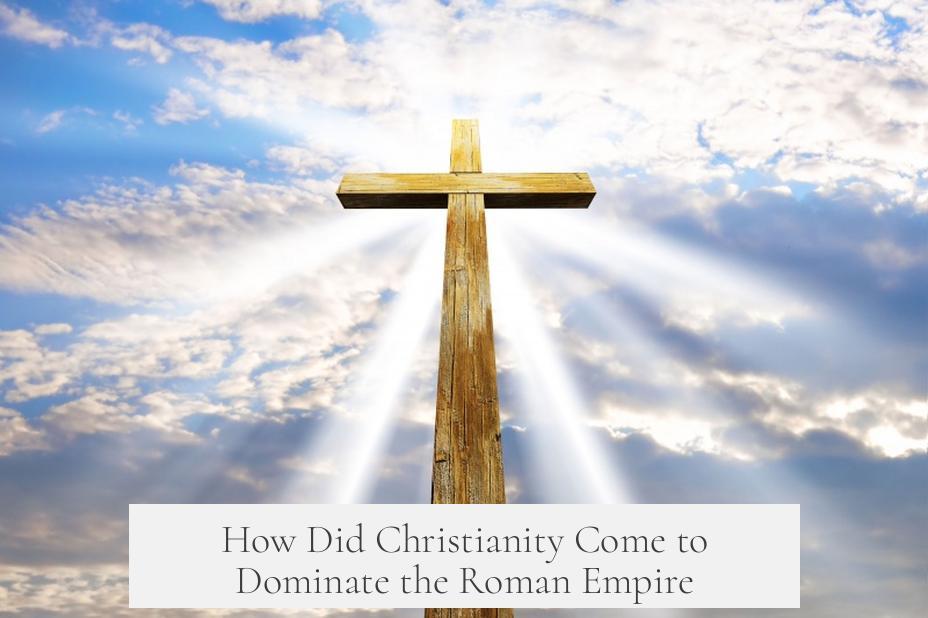
Christianity rose from a small, often persecuted sect to the dominant religion of the Roman Empire thanks to a mix of imperial favors, appealing spiritual promises, effective organization, and shifting socio-political landscapes. But how exactly did this happen? Let’s dive into the fascinating journey of a faith that transformed the ancient world.
Imagine Europe nearly two millennia ago. Romans worship their numerous gods and live by a martial, status-driven code. Into this world steps a new faith centered on love, mercy, and salvation for all. This was no small shakeup.
The Role of Constantine and Imperial Support
Constantine the Great stands as a pivotal figure in Christianity’s rise. Around 312 AD, in a moment that reads like a dramatic movie scene, Constantine reportedly saw a vision promising victory if his soldiers bore the Christian symbol on their shields. Whether this story leans more myth than fact, it marked a turning point. Importantly, Christianity was still a minority religion, even during Constantine’s reign. Interestingly, he might not have become fully devoted until late in life. His mother Helena, a devout Christian, likely influenced him.
Constantine’s backing was strategic. The Roman Empire was faltering under various crises. The unity and strength displayed by Christians appealed as a source of societal cohesion. Constantine endorsed Christianity, instituting laws favoring Christians. For example, Christians could demand their civil cases be judged by Christian priests—a legal edge pagans did not have. Social climbing was increasingly linked to being Christian, encouraging many to convert.
Yet Constantine’s involvement wasn’t about theology alone; it aimed to organize the church. He summoned councils to clarify Christian doctrines, creating a more cohesive faith community within the empire’s complex mosaic of beliefs.
Fast forward about 50 years to Emperor Theodosius I. He took things further, mandating all government officials convert to Christianity and outlawing traditional ethnic cults. This legal enforcement finally established Christianity as the exclusive state religion, pushing pagan religions toward obsolescence.
Christianity’s Appeal Compared to Pagan Religions

Why did so many Romans embrace Christianity over their familiar pagan gods? One crucial reason: Christianity offered a personal and caring God. Unlike paganism’s often distant or capricious deities, the Christian God was loving, kind, and merciful. People got the sense they mattered personally.
This personal connection mattered especially during hard times. Christianity’s message of love and mercy translated into action: Christians formed networks that provided tangible aid to the needy, especially during plagues and crises. Ancient commentators noted Christians caring for the sick and dying while pagan priests remained absent. Imagine facing disease and desperation with a community that truly supports you—that’s powerful.
Furthermore, Christianity’s promise of eternal life appealed broadly. In a world terrified of death, the idea of salvation regardless of social rank was revolutionary. The phrase “the meek shall inherit the earth” attracted the powerless and downtrodden, offering hope beyond social hierarchies.
Christianity also expanded roles for women. Unlike traditional Roman expectations, which confined women to the household with limited freedoms, Christianity offered women a place within the church community—unthinkable in pagan or Jewish circles at the time.
And it wasn’t just the message that attracted converts. Christianity simplified religious practices by dropping cumbersome Jewish laws like dietary restrictions and circumcision. This made the faith more accessible to Gentiles who might have balked at complex rituals.
Unlike most pagan cults, Christianity actively proselytized. Christians sought out conversations with non-believers rather than isolate themselves. This openness led to rapid growth—”the few became the multitudes” as the early Christians proclaimed.
Historical and Social Context Facilitating Spread
The 3rd-century crisis severely weakened Rome, causing economic instability, disease, and social fragmentation. More people, especially the poor, sought religions offering hope, community, and support. Christianity fit this gap like a glove.
Despite brutal persecutions, Christianity didn’t just survive—it grew stronger. Martyrdom became a badge of honor that inspired many to join. Emperor Diocletian’s massive crackdowns failed to crush the faith, highlighting its resilience.
Pagan religions, by contrast, suffered organizationally. Their priests were mostly civil servants focused on festivals without a unified network. Temples were often deserted. The old ways lacked vitality and political support, steadily losing ground from within.
In riding this wave of change, Christianity even absorbed Roman traditions to ease transitions. Pagan gods became saints, and festivals like the winter solstice transformed into Christmas. This blending blurred lines and helped convert nostalgic pagans.
A key enabler was the vast Roman infrastructure. Roads crisscrossed the empire, enabling the rapid spread of Christian ideas, letters, and communities. Without these “highways,” faith’s growth could have crawled.
Socio-Political Advantages and Elite Conversion
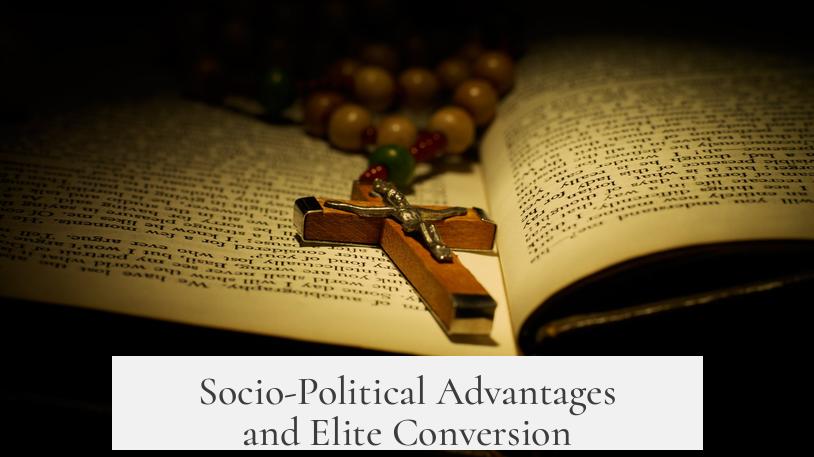
An intriguing angle is Christianity’s appeal among the elite. Often, aristocratic women converted first. Their households followed, including husbands and male relatives. This pattern created a top-down ripple effect.
When powerful figures embraced Christianity, social and material incentives aligned behind the faith. Careers and political fortunes increasingly depended on being Christian. To get a government job or a military commission in Constantine’s empire, you needed to join the club.
Theological and Moral Appeal
Roman culture had long glorified war, conquest, and a relentless pursuit of honor. But this ethos grew spiritually tiring. Into this weariness came Christianity’s alternative: humility and forgiveness.
Christ’s death, marked by forgiveness of his killers, presented a profound counter-model. Romans exhausted by violence found solace in a man who embraced peace and pardon.
Christianity promised salvation and a hopeful afterlife open to all, regardless of social status or past deeds. Compared to pagan Hellenistic beliefs, which emphasized maximizing present life pleasures, Christianity offered an eternal reward. That promise gave many a fresh reason to convert.
Additional Insights

Christian charity was more than moral preaching—it was practical aid. Christians organized care for orphans, widows, and the sick. In times of plague and chaos, this made them invaluable and visible.
The church’s organizational efficiency also distinguished it. It built communication networks among priests, deacons, and bishops who supported each other and maintained doctrinal unity. Opposed to decentralized pagan cults, Christian unity fueled growth.
The use of inspiring martyr stories generated emotional energy that accelerated conversions. This emotional enthusiasm proved a powerful marketing tool long before modern advertising.
Christianity’s adaptability enabled it to incorporate diverse cultural elements, making it appealing to different groups across the empire. This snowball effect meant the more people converted, the easier it was for others to follow.
Summary
In the grand story of how Christianity dominated the Roman Empire, no single factor held all the cards. It was a blend of imperial support beginning with Constantine’s endorsement, legal privileges, and Theodosius I’s enforcement; a compelling theological message promising personal salvation, eternal life, and care for the vulnerable; an organized, proselytizing church; appeal to both elites and the downtrodden; a promise of mercy contrasting Roman values; social upheaval; and the decline of pagan institutions.
Together, these elements created a perfect storm. Christianity was not just a religion; it became a social force and a political necessity. From a small sect to the empire’s official faith, its rise reshaped history and still resonates today.
So next time you encounter a Christian symbol or holiday, remember there’s a gripping saga behind it—a tale of vision, resilience, social compassion, and strategic savvy that shaped the Western world.
Why did Emperor Constantine support Christianity in the Roman Empire?
Constantine converted after a vision before a key battle. He saw Christianity’s unity as a way to strengthen the failing empire. He passed laws favoring Christians, making it easier for them to rise in society.
How did Christianity’s organization differ from pagan religions?
Christianity had a clear leadership network of bishops, priests, and elders who communicated regularly. Pagan priests were mainly civil servants with no unified religious structure or mutual support.
What social benefits made Christianity attractive compared to paganism?
Christianity encouraged charity and help for the poor. Christians cared for the sick during plagues while pagan priests did not. This practical kindness drew many followers, especially the marginalized.
How did legal changes under Theodosius I affect Christianity’s dominance?
Theodosius forced government officials to convert to Christianity and banned pagan cults. These laws cemented Christianity as the official religion and eliminated competition.
Why did Christianity appeal to women in the Roman Empire?
Christianity gave women more active roles than paganism or Judaism. It allowed freedoms and participation in the church that were rare in Roman society, attracting many female followers.
